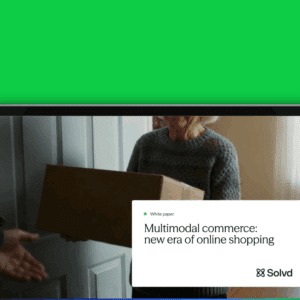By Steve Weber, nChannel, and Mike Rossi, Sweet Tooth

Every interaction with a customer is an opportunity to win their loyalty — whether it’s online or in the store. But data shows that a majority of loyalty programs don’t really move the needle. The lackluster results can be attributed to poor program execution and lack of multichannel perspective.
Giving your customers a plastic card and an ambiguous promise of future value doesn’t encourage repeat purchases. And not extending the benefits across multiple channels doesn’t provide the consistency customers have come to expect.
What Makes A Successful Customer Loyalty Program?
From the customer’s perspective, you must differentiate to be noticed. Your program has to stand out against the thirty other loyalty cards in your customer’s wallet (which may be digital).
Market it: Make it clear to current and future customers that the program exists and what the tangible benefits are.
Make it easy to earn points: Provide several methods to earn points, for purchases, account sign-ups, email addresses, referrals, reviews or sharing products over social media.
Make it easy to redeem: Make sure their point balance is always at their fingertips — on their receipt, online, in an app, etc. And then set realistic levels for point redemption so their loyalty is rewarded often.
Making all of this work isn’t an easy task, especially when you’re selling across multiple channels.
Success relies on collecting and managing customer (and product) data and, more importantly, how well you use that data to make intelligent decisions to improve your loyalty program. To make this happen, you must integrate the systems that collect and maintain customer data and make the customer data actionable.
Integrate The Systems That Collect Customer Data
Touch points, like your point-of-sale system and your e-Commerce, capture data about your customers, such as purchase history and profile data. But stored separately in separate silos does nothing to help your customer loyalty program.
To execute your loyalty program across multiple sales channels, this data must be integrated. Purchase history, for example, must include online and in-store purchases to be complete and relevant.
That means if you want to improve customer loyalty, you must centralizes that data to a single platform.
Integration can be a complicated issue if it is approached reactively. Different systems store data in different ways. Some systems have robust APIs, while others are difficult to extract data from. But if you take on the project proactively, you can define requirements and goals and choose a platform that can store your data in a single location in a standardized format.
With foresight, you can make sure that the platform you choose can also accept data from new sales channels that you may add in the future, like Amazon or eBay.
Make The Customer Data Actionable
The next step is to make the data actionable so you can make informed changes to your program to drive customer loyalty. You must track key metrics and make them visible to managers and key stakeholders. You shouldn’t have to mine your data to evaluate the success of your loyalty program. In order for data to be actionable, it must be at your fingertips through dashboards and data visualization tools.
To measure the success of your loyalty program, focus on these metrics: customer lifetime value (CLV), repeat order rate, and average order/basket size. An improvement in these metrics shows that your program is performing. If these metrics aren’t improving, your customer data can help you identify where the problem lies. An underperforming program is usually caused by a lack of visibility by the customer or by rewards that aren’t seen as valuable.
Another metric that is very specific to a loyalty program’s overall health is breakage rate: The percentage of points issued that don’t ever get spent.
Ideally you want your breakage rate to be less than 40%. Anything higher than that is a good sign that your program isn’t providing value to your shoppers.
The best way to act on a high breakage rate is to adjust your rewards, expiration date, and visibility.
Rewards: If shoppers are going to the rewards page but never redeeming, try a different type of reward.
Expiration: If you see that points are expiring before shoppers get a chance to use them, try a longer expiration period.
Visibility: Take a look at how many of your visitors actually end up on a page that explains the program. Your problem may be that no one knows about it.
Customer loyalty is a product of repeatedly positive customer experiences. Therefore, your customer loyalty program should focus on enhancing the experience — not just giving points away. When a loyalty program is focused on an excellent experience, you have a winning combination.
Steve Weber is the President & CEO nChannel, the leading provider of multichannel management software that simplifies selling for retailers of all sizes. Steve has over two decades of software industry experience, and is a 13-year veteran in the retail space. He is the former Vice-President of eMarketplace Outsourcing Services for Sterling Commerce, a division of IBM. More recently, he was named Microsoft Partner of the Year for Dynamics Retail and awarded Microsoft Retail Independent Software Vendor (ISV) of the year.
Mike Rossi is the CEO and Co-Founder of Sweet Tooth, the number one customer loyalty application for Magento, Shopify, and Bigcommerce. Mike has advised hundreds of merchants on their loyalty and customer retention strategies, and is an accomplished speaker on both subjects.






